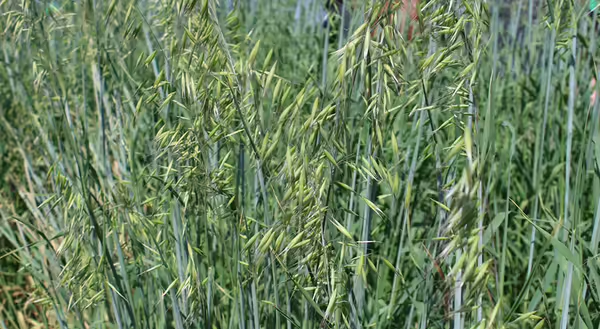
A hidden gem lies in the late season soil—cover crops.
Their transformative power benefits farm operations large and small. And now, vegetable and flower gardeners are discovering their value in the home garden. No matter how small a gardening space you have, the effects of incorporating cover crops can be profound. Plant one in late summer for an amazing start to spring gardening in 2024.
Cover crops are grown to enhance soil health and provide ecological advantages for all soil types.
A cover crop improves soil structure, suppresses weeds, cycles nutrients, prevents erosion, and boosts soil organic matter. When incorporated into a garden, cover crops enhance a garden’s sustainability and grow healthier plants.
An easy cover crop option
Winter-kill cover crops, named for their natural termination by freezing temperatures, offer a low maintenance option for gardeners. As these crops die off during winter, they break down and become organic matter, enriching the soil with valuable nutrients. Their decomposition improves soil structure and fertility, setting the stage for a flourishing garden come spring.
Winter-kill cover crop species
Provide your garden with a blend of these species for a well-rounded cover crop and healthier soil next spring.
Oats
A popular choice for winter-kill cover crops due to their ability to establish quickly, provide excellent weed suppression, and enhance organic matter. Oats grow to three feet tall and add biomass (organic matter) to the soil, during and after its lifecycle.
Field pea (winter pea)
Grows vigorously to smother weeds. With the help of soil bacteria, field pea “fixes” (takes in) nitrogen through its roots. With a few hard frosts come winter, field pea will die and decay, leaving behind usable nitrogen in the soil for future plants (a nourishing legacy).
Tillage radish (oilseed radish) (forage radish)
Recommended for gardeners that struggle with compacted soils due to foot traffic or repeat tillage. The deep taproot grows into, and loosens, compacted soils, creating a healthier soil structure and improving drainage. Oilseed radish grows vigorously in fall, and releases nutrients back to the soil, when it dies in winter. Worms and other soil microfauna especially love feeding on radish residue.
Cover crop planting and establishment
To maximize the benefits of winter-kill cover crops, establish in late August or early September. Ensure good seed to soil contact by raking the bed before broadcasting seed. A hand-crank spreader or single-row planter will ensure even coverage. Follow recommended planting depths for optimal germination if using a seeder. In a pinch, scatter seed, as uniformly as possible, by hand.
Water every 2-3 days until seeds germinate and reach 6 inches tall, then once per week until the end of the growing season. In spring, plant directly into the mat of organic matter – with or without tillage.
Cover crops are a game-changer for vegetable gardeners seeking to elevate soil health. Harness the power of nature with winter-kill cover crops.
Photo Credit: "Black oats" by nrcs-pia-enews is marked with Public Domain Mark 1.0.
ABOUT THE AUTHOR: Nick Frillman is a Local Foods and Small Farms Educator serving Livingston, McLean, and Woodford Counties. A fourth-generation graduate from University of Illinois, Frillman has a B.A. with a double major of Political Science and Spanish and a M.S. in Crop Science with a focus on crop production. Before joining Illinois Extension, Frillman completed a field season of CSA and farmers’ market-style production at a small “beyond-organic” vegetable farm in Sandy, Oregon.
ABOUT THE EDITOR: Liz Repplinger is the Agriculture and Natural Resources Program Coordinator serving Livingston, McLean, and Woodford Counties. A Bloomington-Normal native, Liz earned a B. A. in Animal Science and an M.S. in Animal Science from Illinois State University. She has enjoyed contributing to the multiple facets of Extension including previous support of the 4-H Youth Development Program as a program coordinator and current support of Unit and Statewide Diversity, Equity and Inclusion Initiatives.